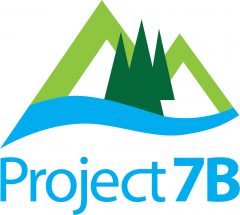Community planning, in this context, is about designing urban and rural areas to meet the needs of a community. Cities and counties always change over time, and planning ensures that changes are positive and strategic. Without the community being involved in planning, city and county changes may only favor developers or a few specific people.
Planning encompasses numerous things—physical land, buildings, roads, parks, parking, zoning, agriculture, economic development, infrastructure, and so on. The goal of land use planning is to ensure that a community’s quality of life, economic vitality, infrastructure, public safety and environmental health are protected and improved over time.
Good land use planning considers things like:
- The physical location of agriculture, housing, industry, recreation, commerce, and how this impacts the community.
- Human behavior patterns and their affect on the landscape.
- Special areas of spiritual, ecological, or cultural importance.
- Land use plans, policies, and codes to direct future development.
Planning for a community’s future can minimize conflicts between activities generated on adjoining properties, and direct appropriate infrastructure to assure the built environment can accommodate traffic flows.
The State and Local Role in Planning
The State of Idaho enables local communities to plan through the Idaho Local Land Use Planning Act (ILLUPA). ILLUPA was adopted in 1975 and has been subject to piecemeal amendment with minor “once-over” in 2000 (Idaho Code §67-6503). Every city and county must participate in carrying out the planning guidelines as set forth in ILLUPA, though there are no express sanctions in the legislation for failure to comply.
Through ILLUPA, the State provides a platform enabling local planning without direct state involvement in a local community’s development and implementation of plans, thus allowing local planning to be what a community makes of it. Through development and maintenance of a Comprehensive Plan, each community sets forth a vision for future growth and pattern of development. Administrative tools (such as zoning and subdivision ordinances) and various plans addressing specific components of the community (transportation, parks, trails, etc) are then developed reflecting the vision, goals and policies as set forth in the plan.
The amount and level of administrative regulation is dependent on what each community finds acceptable. The more public involvement in the process of developing the Plan and subsequent administrative policies the more likely it will result in a local planning structure best reflecting the community as a whole.
